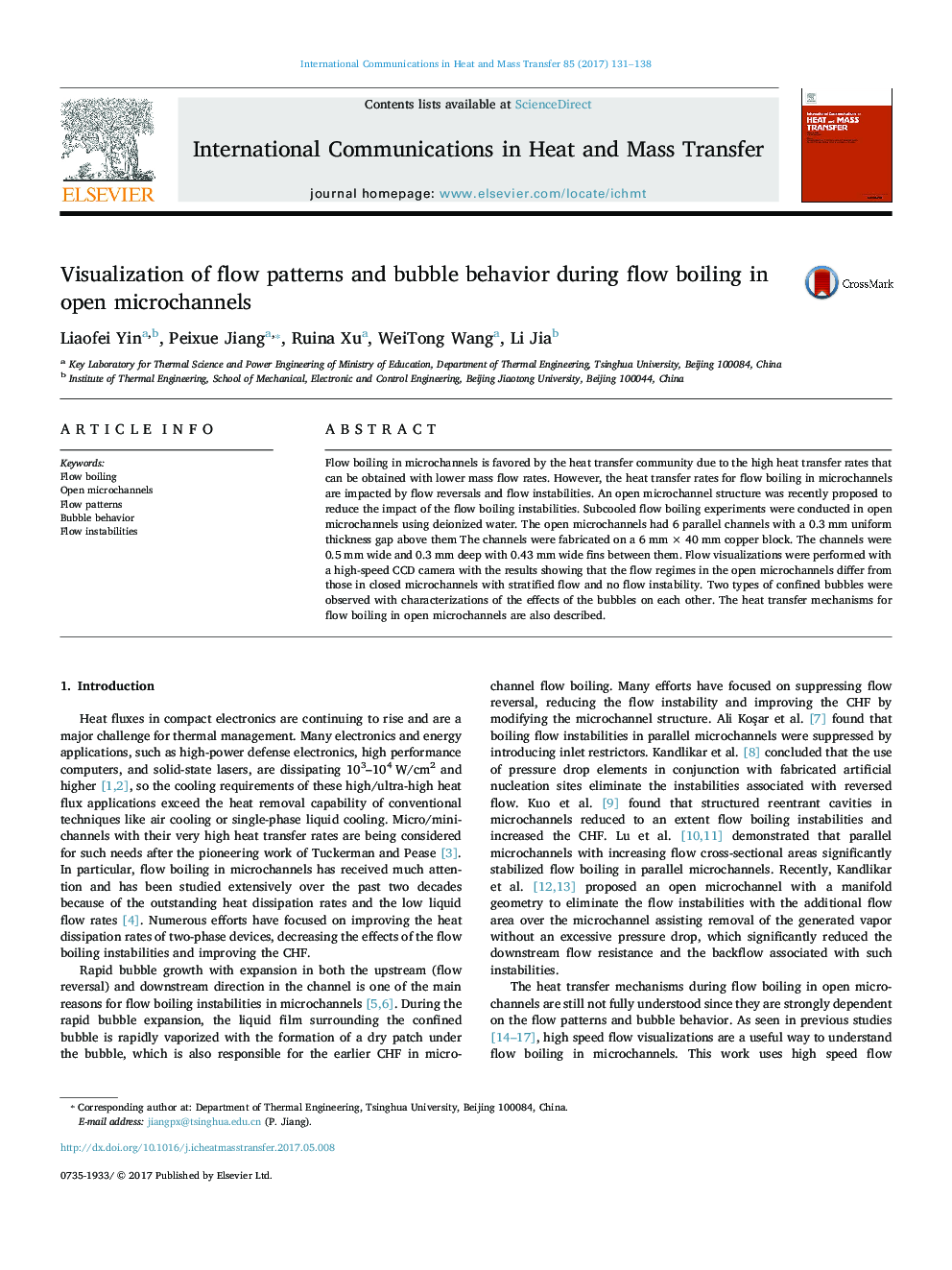| Article ID | Journal | Published Year | Pages | File Type |
|---|---|---|---|---|
| 4992894 | International Communications in Heat and Mass Transfer | 2017 | 8 Pages |
Abstract
Flow boiling in microchannels is favored by the heat transfer community due to the high heat transfer rates that can be obtained with lower mass flow rates. However, the heat transfer rates for flow boiling in microchannels are impacted by flow reversals and flow instabilities. An open microchannel structure was recently proposed to reduce the impact of the flow boiling instabilities. Subcooled flow boiling experiments were conducted in open microchannels using deionized water. The open microchannels had 6 parallel channels with a 0.3 mm uniform thickness gap above them The channels were fabricated on a 6 mm Ã 40 mm copper block. The channels were 0.5 mm wide and 0.3 mm deep with 0.43 mm wide fins between them. Flow visualizations were performed with a high-speed CCD camera with the results showing that the flow regimes in the open microchannels differ from those in closed microchannels with stratified flow and no flow instability. Two types of confined bubbles were observed with characterizations of the effects of the bubbles on each other. The heat transfer mechanisms for flow boiling in open microchannels are also described.
Related Topics
Physical Sciences and Engineering
Chemical Engineering
Fluid Flow and Transfer Processes
Authors
Liaofei Yin, Peixue Jiang, Ruina Xu, WeiTong Wang, Li Jia,
